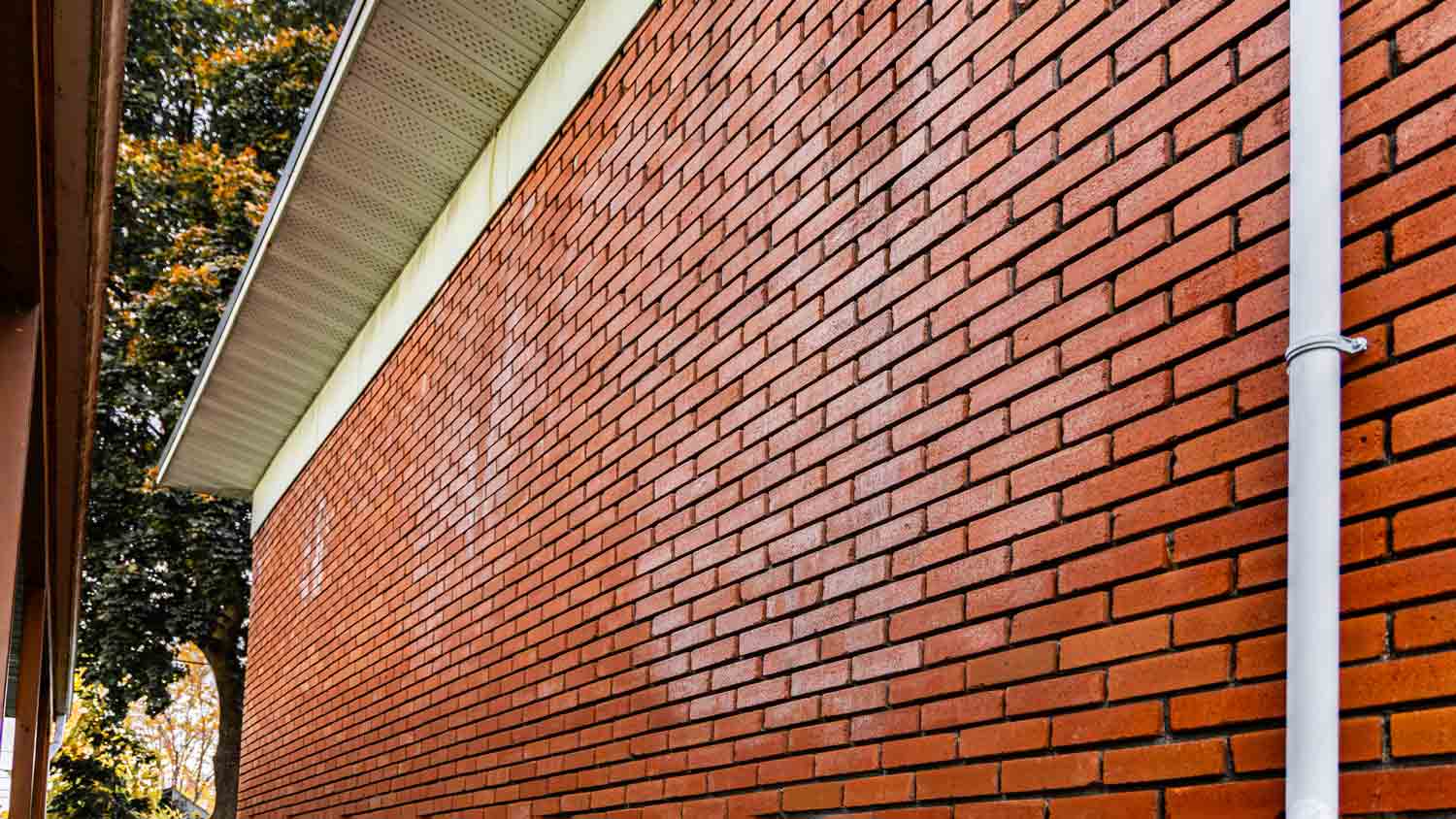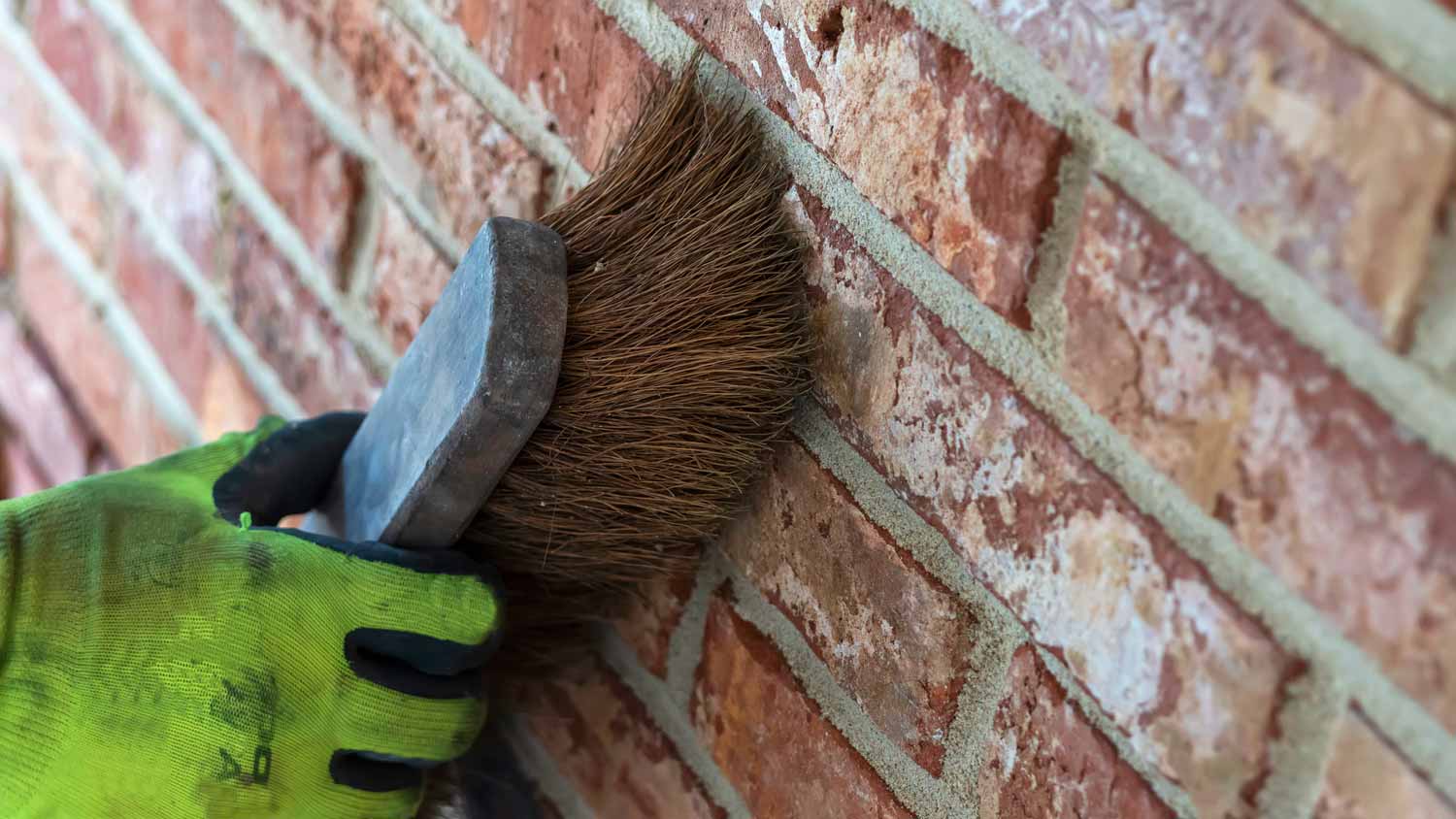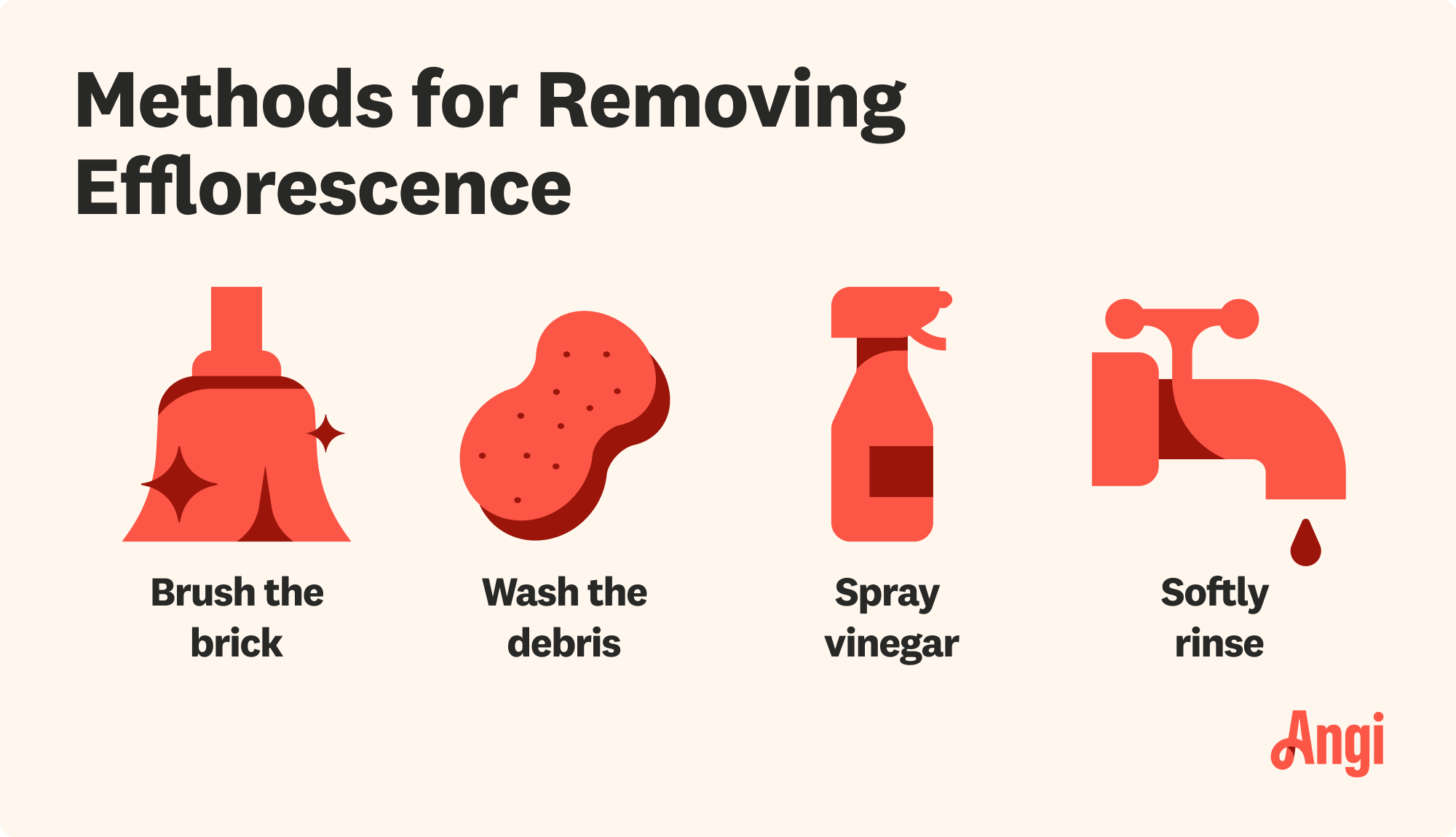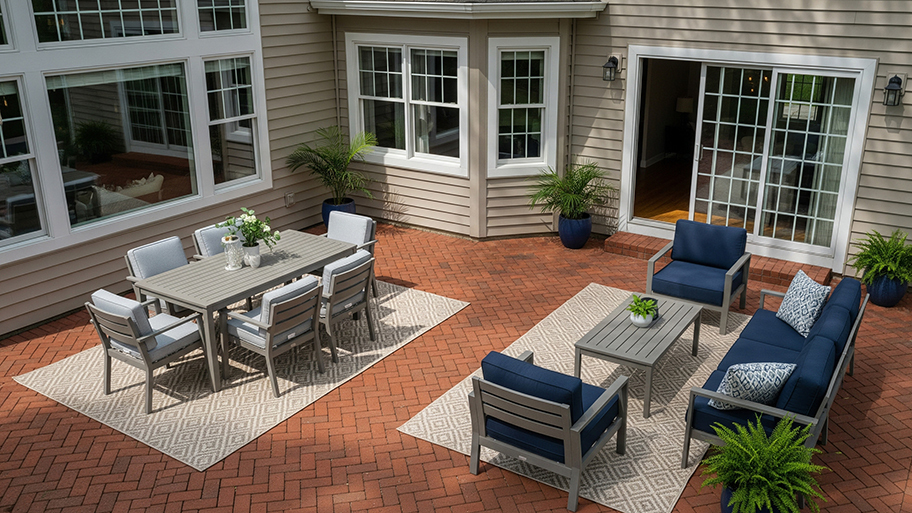
Discover the average stone restoration cost, including price ranges and key factors, to help you plan your next home project with confidence.
How to effectively evict efflorescence from brick


Efflorescence is a common phenomenon that occurs when water evaporates from brickwork.
Hire a masonry pro if you suspect water intrusion or improper installation—they’ll know whether a vapor barrier, sealant, or repairs are needed.
To prevent structural issues, brickwork needs to be repointed every 40 years, which costs between $400 and $2,500.
If you're noticing white staining on bricks, there's a good chance it's efflorescence. Efflorescence is a soft, fluffy, or powdery coating that's caused by evaporated salt deposits that latch onto brick's porous surface. While efflorescence isn't necessarily harmful, it can make bricks look worn and dull. Fortunately, homeowners can learn how to remove efflorescence from brick.
When water evaporates on brickwork, it can leave behind salt deposits that get brought to the surface. While efflorescence can occur in any climate, it's most likely in areas with heavy rain, air moisture, and snowfall. Excessive efflorescence could point to an underlying moisture issue beneath the brick's surface. For example, aggressive efflorescence can be a sign of low-quality construction materials, lack of ventilation within a masonry structure, lack of a proper moisture barrier, and joint material failure. In addition to addressing the cosmetic issue of efflorescence, bring in a masonry pro to inspect your brick to look for signs of deeper moisture damage.

Homeowners who aren't familiar with efflorescence often mistake it for mold, brick fading from the sun, or other common masonry problems. Efflorescence usually looks like a white, powdery deposit on the surface of brick. Texture can range from light and chalky to thick and crystalline. While white is the most common color of efflorescence, it can actually look gray, brown, and yellow if you have certain types of salt in your area. While efflorescence isn't dangerous, it can make bricks look discolored and dilapidated.

Efflorescence commonly appears in wetter fall and winter months in most places throughout the country. In most cases, it will largely wash out by the end of winter. It's generally best to wait until the spring to remove any remaining efflorescence in warm, dry weather to avoid the need to repeat the process several times a year.

Start by dry brushing to loosen any efflorescence. Using a stiff-bristle brush, gently scrub away the white, powdery coating on your bricks. Do your best to remove as much efflorescence as possible from the surface of the bricks without scraping them.
Use a lightly dampened sponge to wipe away the efflorescence debris you created while brushing. Avoid soaking the brick as you do this, as adding more moisture at this point can actually leave behind more efflorescence.
In general, distilled white vinegar is considered the safest, gentlest, and most effective solution for removing efflorescence. Without diluting vinegar with water, fill a small spray bottle. Next, coat the brick with vinegar. Wait 10 to 15 minutes for the vinegar to soak in before gently scrubbing the brick with a dry, stiff-bristle brush.
If you have heavy efflorescence, a vinegar spray may not be enough. Consider using an acidic cleaner from a hardware store to dissolve layered-on efflorescence. While there are many concentrated cleaners on the market, homeowners should avoid any products containing muriatic acid because this substance is known to burn and stain bricks.
While this next step requires a wet sponge, it's important to only lightly dampen it instead of soaking it. Using the sponge, gently wipe the area of the brick you treated with vinegar. Bricks can now be allowed to dry naturally.
Unfortunately, homeowners don't have much control over efflorescence. Factors ranging from the rain and snow levels where you live to the materials used when a brick wall was constructed can influence efflorescence formation.
However, homeowners can take some steps to reduce the eyesore of efflorescence. Consider these tips:
Apply a water-repelling surface sealer or paint that makes it harder for efflorescence to latch onto the porous surface of brick.
If you suspect that water intrusion is behind efflorescence formation, install a vapor barrier to prevent moisture from seeping up into a brick wall or surface from below.
Adjust landscaping to ensure that water runoff is moving away from masonry.
If you have a sprinkler system or utilize standalone sprinklers, ensure that water sprays are not directed at a brick surface.
Any new brickwork that is added to a property should be protected from the elements in the first few weeks to prevent efflorescence.
As part of routine brick maintenance, brick needs to be repointed about once every 40 years to preserve its integrity. On average, repointing costs between $400 and $2,500. Brick resealing should be done once every three to five years.
For many homeowners, this task can become a part of spring outdoor maintenance once you learn how to remove efflorescence from brick. If you're concerned that water intrusion or faulty brick installation is to blame for excessive white staining on bricks, call in a local masonry company near you to see if there's a long-term solution for reducing efflorescence. A masonry pro may also be able to offer tips on using special sealants to keep moisture out of brick.
From average costs to expert advice, get all the answers you need to get your job done.

Discover the average stone restoration cost, including price ranges and key factors, to help you plan your next home project with confidence.

Need to repoint brick in your home to make your home look fresh and new? Use this guide to repointing brick cost to price out your project before starting.

The cost to replace brick front steps depends on the type of brick, square footage, pattern, and more. Learn how much you may spend on this project.

Here are the steps to repair your brick patio—whether you need to re-level a sinking patio or replace missing mortar.

Learn about the five common causes behind black stains on your brick and how to remove them effectively, either by yourself or by hiring a pro.

A landscaper can install a block wall that’s structurally sound and looks beautiful. Learn all about hiring a landscaping contractor for this project.